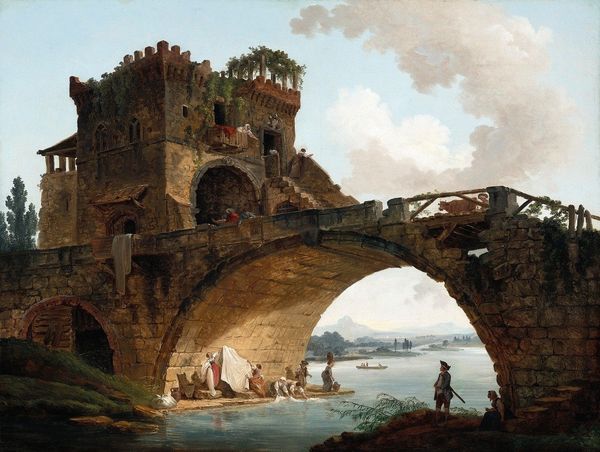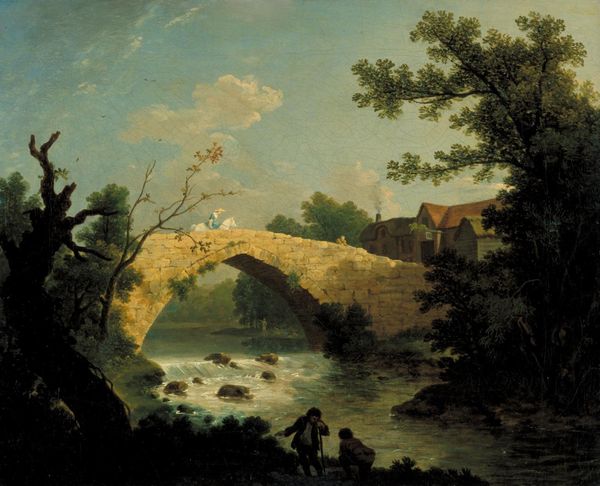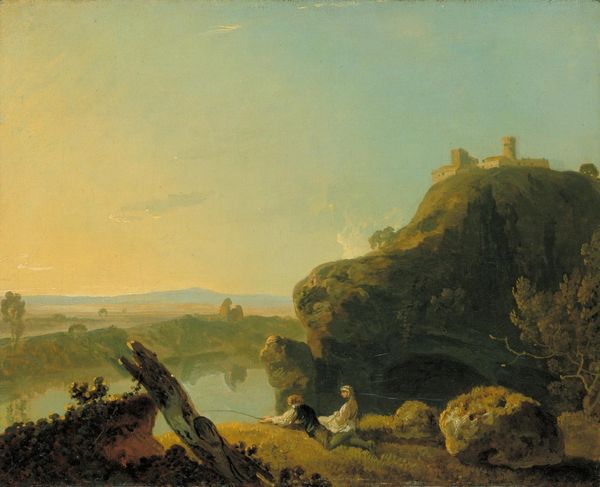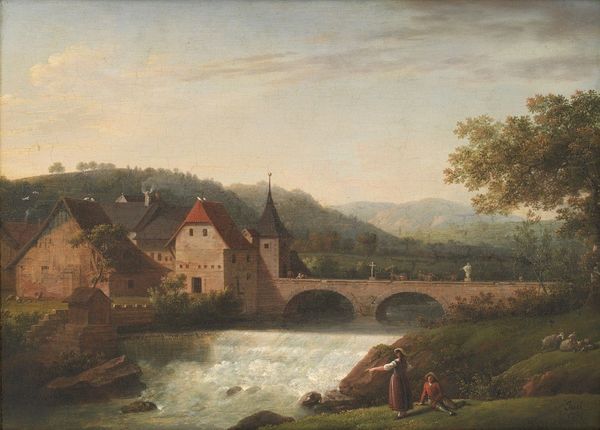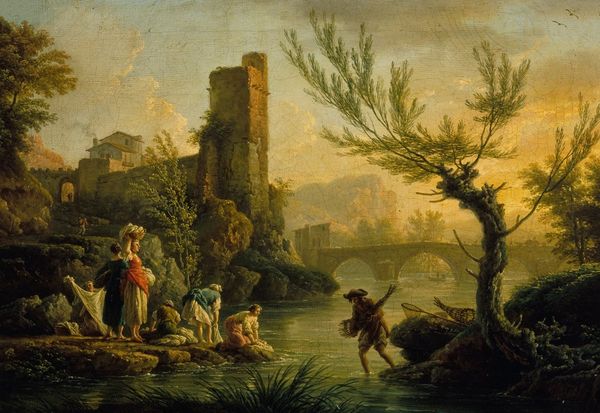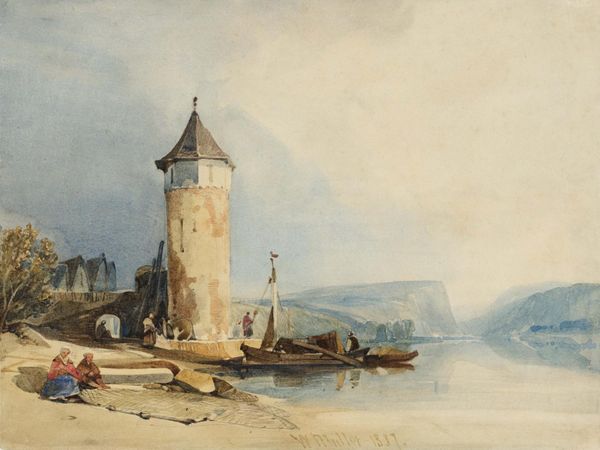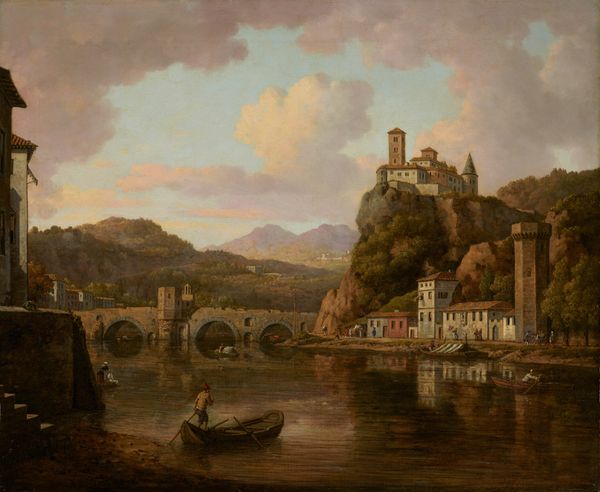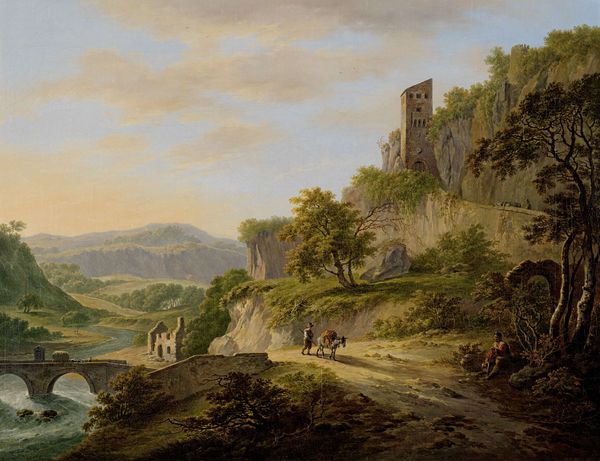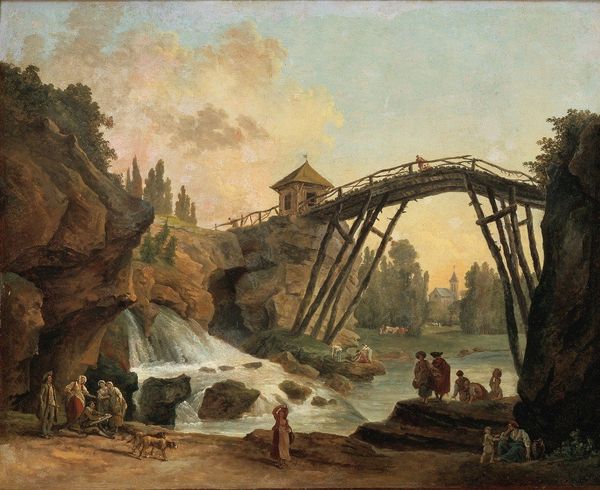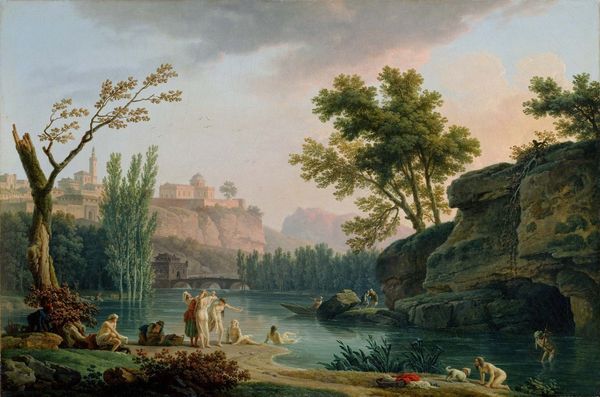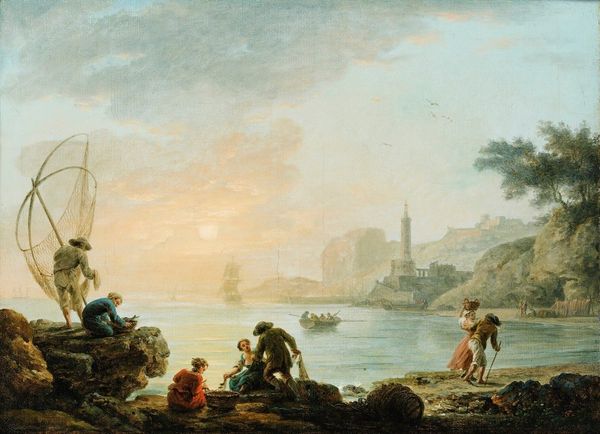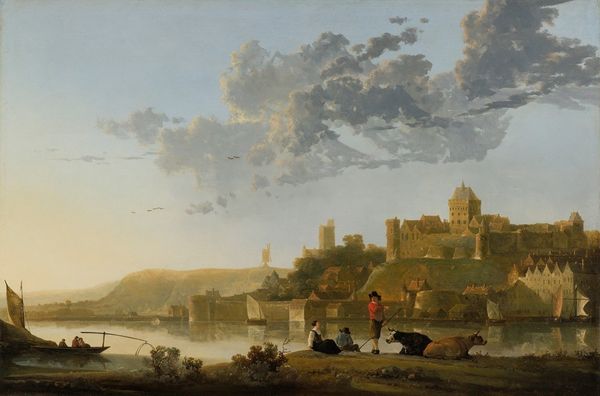
painting, oil-paint
#
baroque
#
painting
#
oil-paint
#
landscape
#
painted
#
oil painting
#
derelict
#
cityscape
#
genre-painting
Copyright: Public Domain: Artvee
Curator: Hubert Robert's oil painting, "A Capriccio River Landscape With Washerwomen Near A Ruined Bridge" presents a vision of the past steeped in an idealized, pastoral scene. What captures your attention first? Editor: There's an almost wistful melancholy that washes over me. The scene feels romantic, but in a minor key; a beautiful ruin suggests a past glory but also inevitable decay and neglect, while people just live, right beside it, like nothing is the matter. Curator: That tension is intrinsic to Robert’s work. Notice how the decaying bridge serves not just as an architectural structure but as a symbol. Bridges in art often represent connection and transition. Here, though ruined, it persists—suggesting a poignant dialogue between the past and the present, resilience in the face of decline. Editor: And the washerwomen, seemingly unaffected by the ruins, are engaged in their daily work, emphasizing class difference and everyday life contrasted against the backdrop of a monument—visible markers that reflect the socio-economic status during that time period. What sort of statement do you think he’s trying to make here? Curator: He's exploring themes of memory and continuity, but also the transience of worldly power against the relentless persistence of nature and daily human activity. That ruined tower is echoed in so many Romantic landscape paintings: a kind of symbolic shorthand for the collapse of old regimes, but softened with gentle sunlight. Editor: Yet, there is a darker side; is it possible that it symbolizes a type of resistance, speaking perhaps, to a hope of demolishing the establishment and rebuilding it altogether? In this context, is Robert suggesting we question what structures should survive into the future? Curator: I think that may be taking a 21st-century sentiment a bit far! But you’re right that we read that contrast, the juxtaposition of present lives with past icons. Ultimately, what is deemed significant enough to save is constantly challenged across every culture, and there might be that implication here too. Editor: True. In the end, this landscape allows viewers to contemplate, like those figures, amidst both ordinary life and crumbling power, about the enduring value, even relevance, of the symbolic relics we inherit. Curator: Well said. It serves as a good reminder to always look closely and be reminded about the ever-changing roles of symbols in society.
Comments
No comments
Be the first to comment and join the conversation on the ultimate creative platform.
